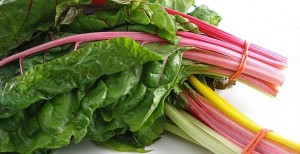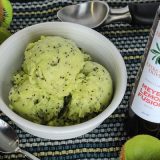Health Tips: Super Summertime Skin

Geri Wohl, CNC www.bettereatingcoach.com
The fountain of youth has been an elusive goal for thousands of years. Ponce de Leon headed to the New World in search of this amazing elixir. Nowhere on our bodies is our age more apparent than on our skin. We all know that first impressions count! So let’s delve into ways to preserve and make our skin look more youthful at the height of summer.
First, some basic info about skin. Did you know that the skin is the largest organ in the body? In the average adult, skin is about 8 pounds and if extended would cover about 22 square feet. Our skin is part of the integumentary system providing protection for all our internal organs as well as acting as a first line of defense for our immune system. In addition, it prevents dehydration, excretes toxic substances, stores fat, manufactures vitamin D and relays sensory information to the brain.
The skin is a barometer of our internal health and well-being. If we are nutrient deficient, it is likely that it will manifest in our skin, hair or nails. Skin is made of three layers. The outermost layer that we see is the epidermis. It is constantly being shed with new cells reaching the outer layer every 4-5 weeks. Because of this high turnover rate, lifestyle changes can have a large effect in a short time. The epidermis is mainly protective in nature. As the cells move to the top of the surface, they are filled with a waterproof protein called keratin forming this important barrier. The middle layer, the dermis, is the thickest layer of skin. It gives skin the strength and elasticity for which we all strive. It is this layer in particular that we need to support to give us a more youthful appearance. The blood vessels in the dermis help regulate our body temperature as well as transport nutrients and waste products. Nerve receptors send signals to the brain. Collagen, a structural protein, keeps all our internal organs and muscles in place. Underneath the dermis is the base layer called the hypodermis or subcutis. It is a layer of fat that provides a reserve of energy and cushioning from falls.
While we can’t change our genes, we can make lifestyle changes to improve the health of our skin. Antioxidant rich foods, those containing vitamins C, E, and A, are all extremely important to neutralize the harmful barrage of UV radiation and pollution according to the American Academy of Dermatology (AAD). These vitamins work synergistically to regenerate antioxidant function. Foods with higher ORAC (Oxygen Radical Absorbance Capacity) scores have greater antioxidant potential. For more about ORAC scores, see my article http://www.bettereatingcoach.com/5813-spice-it-up.html. Neutralizing free radicals is paramount, as free radicals can denature collagen and elastin, the fibers that keep our skin supple. Without collagen and elastin, we are much more prone to wrinkles and other signs of aging. Foods high in vitamin C include citrus fruits, bell peppers, broccoli, cauliflower and leafy greens. Vitamin E can be obtained from nuts, seeds, olives, spinach and asparagus. Many skin creams also have vitamin E added to their formulas. In addition to these internal antioxidant vitamins, Duke University researchers have demonstrated that “appreciable photoprotection can be obtained from topical vitamins C and E”. Vitamin A is also necessary to maintain and repair skin tissue. Dry, flaky skin may be a result of a vitamin A deficiency. Vitamin A-rich foods include those that are orange or yellow in color such as mangoes, carrots, squash and sweet potatoes.
Other important nutrients for healthy skin include biotin, one of the B vitamins. Biotin forms the foundation of hair, skin and nails. Food sources of biotin include Swiss chard, nuts, eggs, milk and berries. Vitamin K can help reduce circles under the eyes as well as prevent bruising. Selenium, an antioxidant, assists in protecting the skin from sun damage. Copper and zinc are nutrients important in the formation of elastin. These two minerals need to be kept in a finely tuned balance. Another strong antioxidant is alpha-lipoic acid (ALA). ALA is the precursor to the omega 3 fatty acids. Flax seeds are an excellent source of ALA. ALA is significantly stronger than both vitamins C and E. It can penetrate both watery and oily environments, performing its magic both internally and externally. ALA aids in rebuilding skin cells damaged by pollution.
Ensuring that you are consuming healthy proteins will aid in skin health. Proteins break down into amino acids that then recombine to form the structural elements of skin. Grass fed beef and wild fatty fish like salmon contain important collagen-building amino acids as well as zinc. For more on the benefits of protein, see my article http://www.bettereatingcoach.com/72412-benefits-of-breakfast.html. Consuming healthy oils, particularly omega 3 fatty acids will aid in providing the natural oil barrier of the skin. For more on omega 3s, see my article http://www.bettereatingcoach.com/7313-fearful-fats.html.
Stay well hydrated. Water is essential throughout the body. Adequate water allows for nutrients to remain inside the cells and for waste products to be excreted. You will sweat more efficiently if you are well hydrated. Try to drink half your body weight in water ounces starting first thing in the morning and continuing throughout the day. If you feel thirsty, it is an indication that you are already dehydrated.
So now that you know some things to add, here are areas to avoid. Lower the amount of “naked carbs” or, in other words, sweets. Sugar is neither your waistline’s friend nor your skin’s. Sugar attaches to collagen causing the skin to lose its elasticity. Eating lower glycemic foods and maintaining an even blood sugar balance is extremely important. Avoid sun exposure especially between 10am and 4pm when the sun’s UV rays are at their strongest. These UV rays penetrate skin and damage the elastin fibers resulting in less supple skin, wrinkles and sunspots. Use sunscreen with UVA and UVB protection when outside. Smoke is another factor that negatively affects our skin. The chemicals in smoke exacerbate and can cause wrinkles. And lastly, excessive alcohol may prevent some people from eating well and obtaining healthy nutrients.
As we want to enjoy these last weeks of summer, make some healthy changes. Your skin will thank you!
© Geri Wohl, CNC










